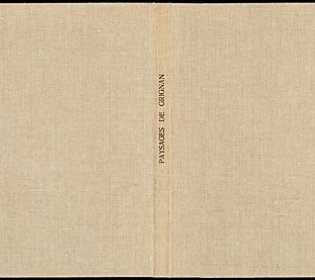Paysages de Grignan
- Year:
- 1965
- Author:
- Philippe Jaccottet (1925 - 2021)
- Artist:
- Gérard de Palézieux (1919 - 2012) )
- Publisher:
- Bibliothèque des Arts
Love for nature
Jaccottet's compatriot Gérard Palézieux shared his love for the unspoiled rural area, and resided in Grignan regularly from 1960 onwards. The artist, known mostly for his graphic work, concentrated on nudes, still-lives and landscapes, influenced by the Tuscan painters. According to Jaccottet, Palézieux's subject was tradition itself. These two nostalgic Swiss men complemented each other perfectly.
In Paysages de Grignan, the engravings by Palézieux and the text by Jaccottet are two equal components: one element isn't simply supportive of the other- as it so often is. The history and beauty of Grignan's landscape is expressed both in words and in images. Palézieux remained loyal to his characteristic, classical style: he indicated the shape of houses and trees through his use of subtle hatching.


![Paysages de Grignan, pagina [7]](/sites/default/files/styles/galerie/public/images/paysages-de-grignan-p7.jpg?h=d9e7fea1&itok=OzwPkDsi)
![Etching [4]](/sites/default/files/styles/galerie/public/images/paysages-de-grignan-ets4.jpg?h=ff8c3fa3&itok=QoXuQeFO)
![Etching [12]](/sites/default/files/styles/galerie/public/images/paysages-de-grignan-ets12.jpg?h=6cf97080&itok=em3qnw6v)
